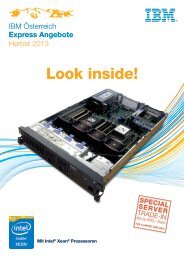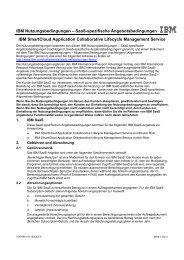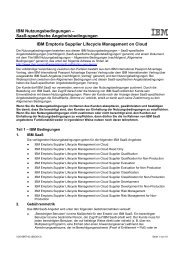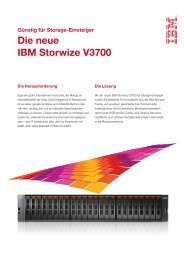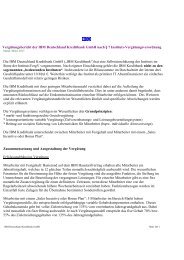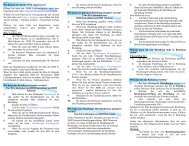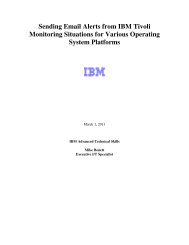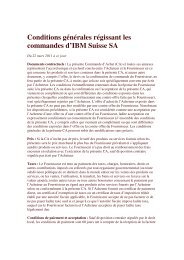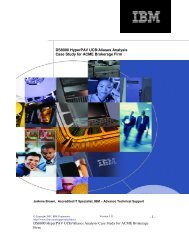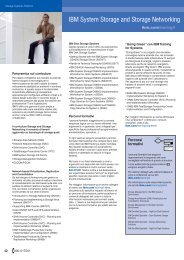FICON Express2 Channel Performance Version 1.0 - IBM
FICON Express2 Channel Performance Version 1.0 - IBM
FICON Express2 Channel Performance Version 1.0 - IBM
Create successful ePaper yourself
Turn your PDF publications into a flip-book with our unique Google optimized e-Paper software.
<strong>FICON</strong> <strong>Express2</strong> <strong>Channel</strong> <strong>Performance</strong> <strong>Version</strong> <strong>1.0</strong><br />
Page 18<br />
The average frame size info from the RMF <strong>FICON</strong> Director Activity report can be used to<br />
determine if a workload is more likely to be processor or link limited. The following general<br />
rule-of-thumb can be applied:<br />
If the average frame size is less than 1000 bytes, then the workload is most likely<br />
processor limited.<br />
If the average frame size is greater than 1500 bytes, then the workload is most likely<br />
bus or link limited.<br />
For workloads with average frame sizes greater than 1000 bytes and less than 1500<br />
bytes, then both channel processor and bus/link utilizations should be monitored.<br />
More information about how to find these fields on the RMF <strong>Channel</strong> Activity and<br />
<strong>FICON</strong> Director Activity reports for your production workload can be found in the<br />
<strong>FICON</strong> RMF Information section of this paper.<br />
In summary, the performance results of 4 different DASD I/O driver benchmarks run on<br />
<strong>FICON</strong> <strong>Express2</strong> channels were presented here. Response times and utilizations of the most<br />
pertinent channel resources for each benchmark were explained. For all of these<br />
benchmarks, results are significantly better than previous generations of <strong>FICON</strong>, <strong>FICON</strong><br />
Express and especially ESCON channels.


